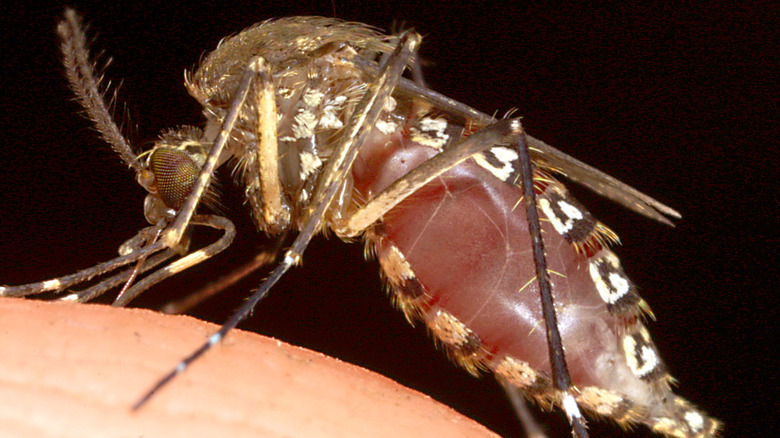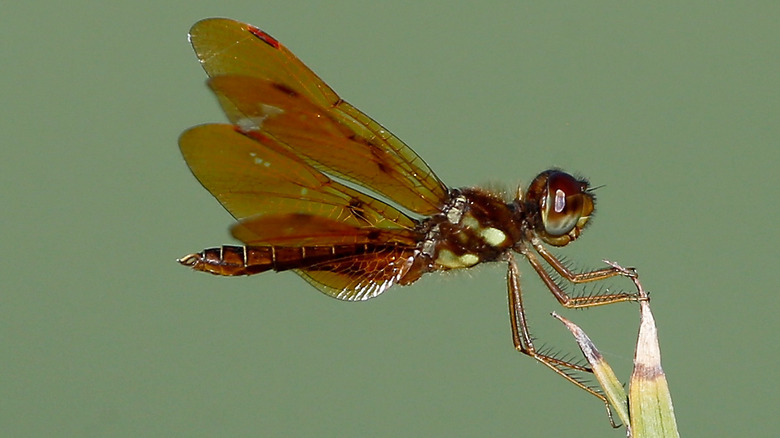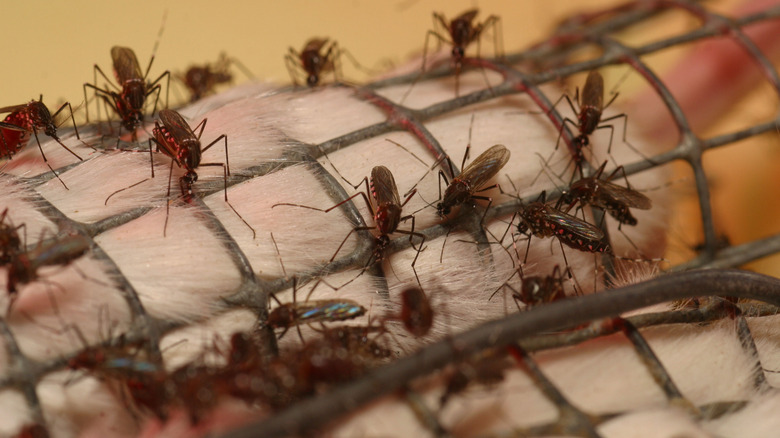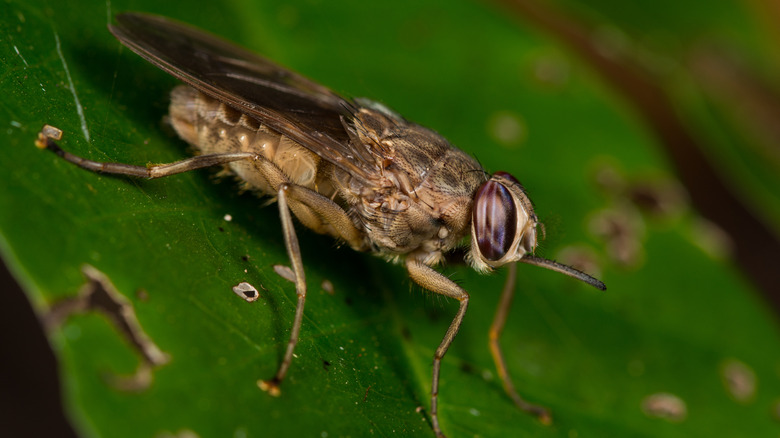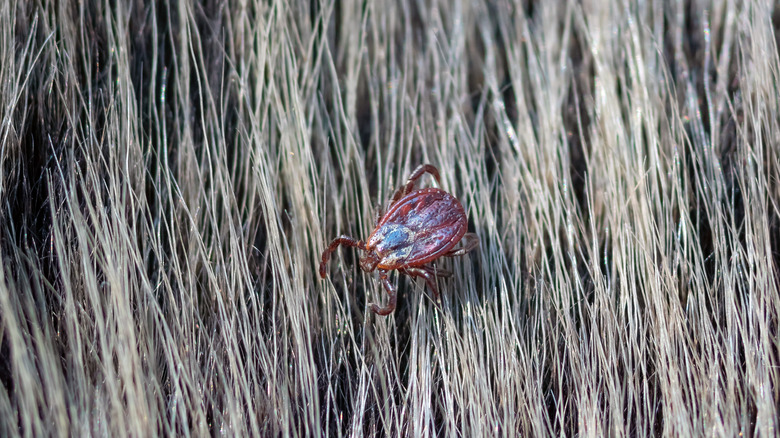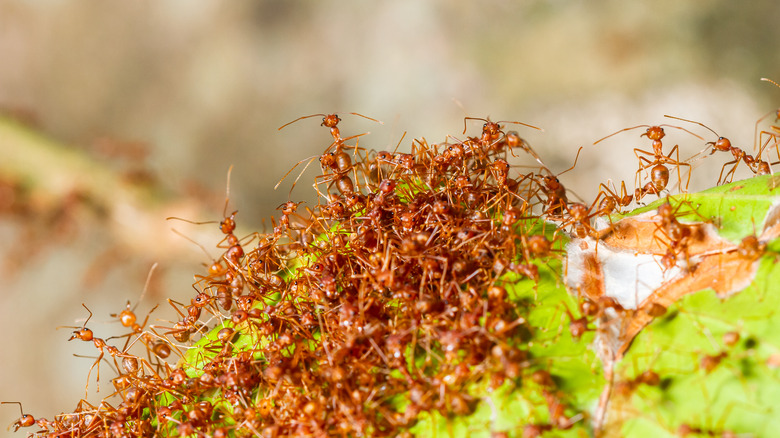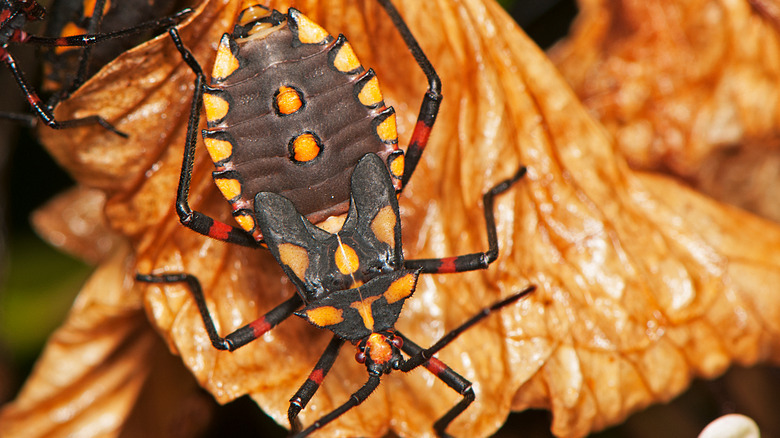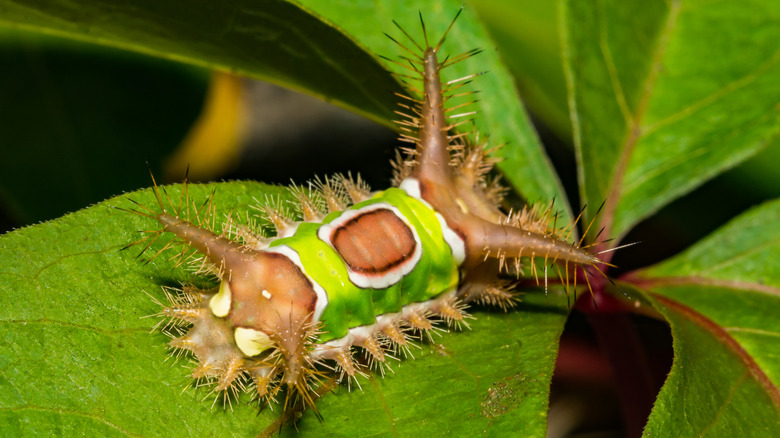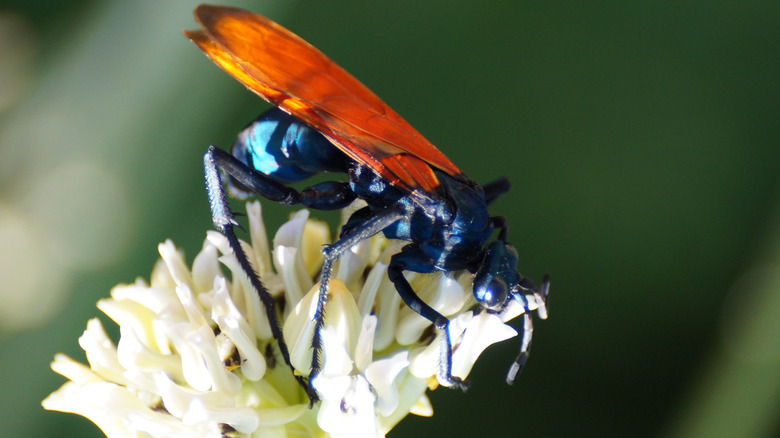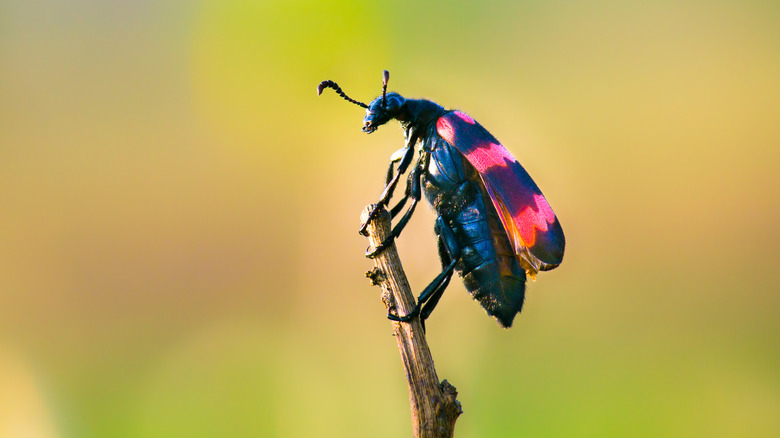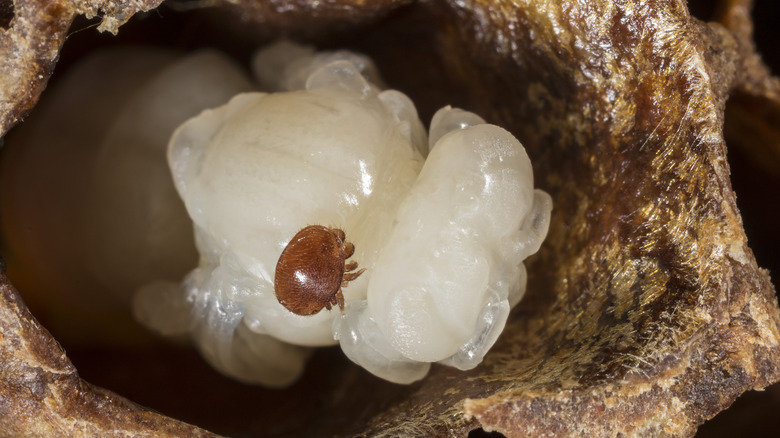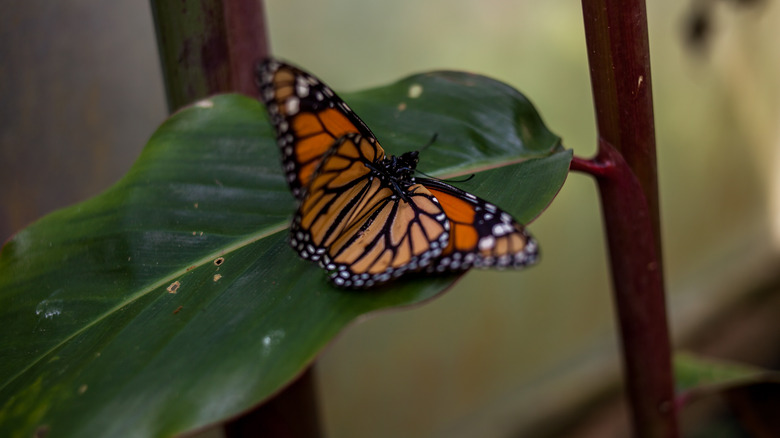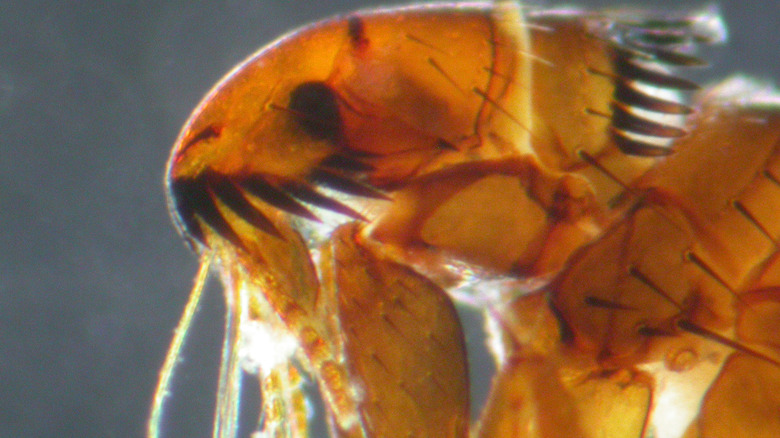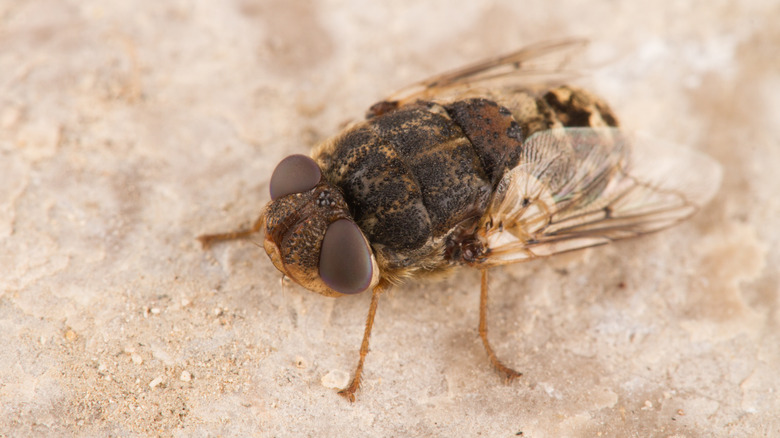The World's Most Dangerous Insects
At one point, prehistoric skies were filled with giant insects, but now the biggest insects are no larger than a human hand. But even though the insects now may be small, even the smallest things can cause a lot of damage to humans, whether it's through their bite or their sting. A lot of insects aren't dangerous on their own but carry a variety of deadly and dangerous diseases. Other insects may not be so dangerous to humans but can be absolutely lethal to other animals.
However, no matter how dangerous (and annoying) some of these insects may be, many of them play important roles in the ecosystem, so who knows what might happen with the release of genetically engineered insects.
In the end, the most humans can do is to learn to live alongside these dangerous insects. Because to them, humans must seem pretty dangerous too. These are some of the world's most dangerous insects.
Predictive hunting
Although they may not seem too intimidating to humans, dragonflies are one of the most dangerous insects, if not animals, in the entire world. As a predator, it's "the most successful hunter on Earth" and has a successful kill rate of 95%, according to the BBC.
According to Science Daily, this is primarily because dragonflies predict where their prey is going to be, rather than chasing it like a lion. Once a dragonfly sets its sights on a singular target, it's able to distinguish it from other visual information "and then predict its direction and future location." It also doesn't hurt that each wing can move independently, and it has almost 360-degree vision (via Treehugger).
The dragonfly isn't an apex predator like the crocodile, but dragonflies have similarly remained unchanged for millions of years. Their fossils from 300 million years ago resemble the dragonflies of today, although they were significantly bigger. At that time, the wings of a dragonfly could measure over 10 inches.
Dragonflies have the ability to bite, since that's how they eat their prey, but their bites are harmless to humans, and they only bite a human in self-defense. However, according to the World Dragonfly Association, even though dragonflies don't have the ability to sting, "there have been a number of accounts of egg-laying dragonflies that, when interrupted, continued the operation into the flesh or clothing of examining odonatists."
Death by association
Even though mosquitos themselves don't kill, the diseases that they carry and transmit to humans cause up to 1 million deaths each year worldwide, more so than any other animal in the world. Almost half of these deaths are from malaria alone.
Mosquitos can carry malaria, yellow fever, and West Nile virus, infecting up to 700 million people every year. According to DW, some of the most dangerous mosquito-borne diseases also include leishmaniasis, sindbis virus, and chikungunya. Dengue fever is also transmitted by mosquitoes, and the World Health Organization estimated in 2020 that almost half of the world's population is "at risk of contracting dengue." And even though only about half of all mosquitoes bite, since female mosquitos are the ones that bite, there are still enough of them to do some serious damage.
And mosquitos are incredibly sneaky when they do their feeding. When a mosquito bites, it also injects some of its own saliva into the bite. This saliva contains an anesthetic, which keeps you from feeling the bite until it's too late.
A deadly sleep
The tsetse fly looks similar to an ordinary house fly, but unlike its harmless twin, it can transmit a number of different diseases to humans, including human African trypanosomiasis, also known as sleeping sickness. And unlike the mosquito, which can bite without you even noticing, according to the BBC, "the tsetse fly's mouth has tiny serrations on it that saw into your skin on its way to suck out your blood," leaving it with a particularly painful bite.
Sleeping sickness is significantly less deadly than it used to be, and in 2020, Togo became the first country in Africa to eliminate sleeping sickness as a public health problem. In 2015, there were fewer than 3,000 cases across the African continent, and in 2018, that number dropped to 977, according to the World Health Organization.
Tsetse flies carry Trypanosoma brucei rhodesiense, the parasite that causes sleeping sickness, and they can transmit it to other animals in addition to humans. Animal trypanosomiasis, also known as nagana in cattle or sura in horses, is considered a "major livestock production and public health constraint," writes BMC Veterinary Research.
The symptoms of sleeping sickness is similar in both animals and humans. After an initial fever and muscle aches, the infected person becomes more and more tired. "Personality changes, severe confusion, and poor coordination can also happen." Without treatment, it can be deadly. From 1900 to 1920, over 250,000 people died from sleeping sickness in Uganda alone.
Careful of the tall grass
Ticks can carry the Borrelia bacteria, which is responsible for causing Lyme disease in humans — but not all ticks can cause Lyme disease. According to Johns Hopkins Medicine, only a few species of tick are able to transmit the bacteria to humans and "depending on the location, anywhere from less than 1% to more than 50% of the ticks are infected with [the bacteria]."
Lyme disease usually shows itself through a bulls-eye shaped rash and if left untreated can develop into severe joint pain and neurological problems. Often, a tick bite is also painless, and some people don't notice that a tick has been feeding on them until a couple of days later. This is when the potential for infection transmission is greater, because "something on the order of 24 hours is required before transmission occurs."
NPR writes that in the Northeast and Upper Midwest of the United States, up to half of deer ticks carry the bacteria. In the West and South, less than 10% of ticks show infections. However, even if you're not worried about Lyme disease, ticks bites can also cause Rocky Mountain spotted fever, Powassan disease, or Babesiosis.
Other tick-borne diseases across the globe include Crimean-Congo hemorrhagic fever, Kyasanur forest disease, and Tickborne encephalitis. And technically, a tick isn't even an insect. It's an arachnid like spiders and mites.
An accidental importation
Originally from South America, both red and black fire ants were accidentally imported into the U.S. in the beginning of the 20th century. According to Texas A&M University, the black imported fire ant was first reported in 1918, and the red imported fire ant is believed to have been imported around the 1930s. Since being accidentally imported, the black fire ant has kept to Alabama and Mississippi, but the red fire ant has spread across nine southeastern states.
Fire ants can also be deadly. ABC reports that in 2006, a South Carolinian woman named Janet Wallace Roedl Shiansky died after she was attacked by red ants while she was gardening. Although most people only suffer from "minor red welts and a pustule," 5% of cases result in a severe allergic reaction, or anaphylactic shock, and can result in death.
Red fire ants are also notoriously difficult to get rid of, especially since they know how to float. According to the BBC, they're used to doing so since they originated in the South American floodplains, and each "raft" of ants can contain "as many as 100,000 individual ants." Protecting the queen in the center, the ants can survive without food for weeks until they find a way to get to dry land.
Australia is also currently in a battle against its own invasive red fire ants.
The worst kiss
Despite their name, you don't want to lock lips with the kissing bug. Their kisses don't hurt thanks to the anesthetic they inject into your skin, but kissing bugs can carry the parasite Trypanosoma cruzi, which causes Chagas disease in humans.
A kissing bug bite usually doesn't cause much more than slight swelling or redness, but some people may develop anaphylaxis as a result. And according to the Texas Ecological Laboratory, unlike other bugs, kissing bugs don't actually transmit the parasite to humans during the bite itself. The parasite lives in the urine and feces of the kissing bug, so infection occurs when the kissing bug defecates, and the poop enters the body via the bite, the mouth, or eye. "Dogs can become infected by eating kissing bugs."
Approximately 8 million people a year become infected with Chagas disease worldwide, and although it can be curable if caught early, over 10,000 people die as a result every year, according to the World Health Organization.
The two stages of Chagas disease are the acute phase and the chronic phase. The first phase is categorized by fever, rash, and loss of appetite, but "some people do not notice any symptoms during the acute phase." The chronic phase can occur decades after the original infection and often comes with a variety of heart problems, including heart failure.
Look but don't touch
Few things say "DO NOT TOUCH ME" as aggressively as the saddleback caterpillar, native to North America. Before growing up into a limacodid moth, or a slug moth, the saddleback caterpillar features "venomous, urticating spines" along with its bright green and brown color pattern, writes the University of Florida. Four corners of its body have the largest spines, while numerous smaller ones come out of its sides.
According to the Center for Urban Agriculture, coming into contact with one of these poisonous spines can hurt as much as a bee sting, and like a bee sting, the site typically swells and reddens afterwards. During the first few hours, waves of nausea may also be experienced.
The spines also break off and embed themselves into the skin, "interrupt[ing] healing as the protoplasm from the venom glands dries into the tissue area," and the longer the spines are in the body, the more venom enters the body. More severe symptoms of a saddleback sting can range from migraines to hemorrhaging. And it's not just the live ones you have to worry about, since the spines retain their venom even after a saddleback caterpillar has died.
There are several other dangerous caterpillar species around the world, and in some parts of Brazil, "caterpillars are now killing more people than snakes," reports UPI.
The most painful sting in the world
Known for being one of the most painful in the world, the sting of a tarantula hawk has been described as "instantaneous, electrifying and totally debilitating." The tarantula hawk is a species of spider wasp, but they get their name from the fact that females hunt tarantulas.
According to The Natural History Museum, after being stung by a tarantula hawk, a tarantula will become paralyzed while staying alive. Afterwards, the tarantula hawk lays an egg in the spider's body, so that when the larva hatches out, it can burrow further into the spider and start eating. Meanwhile, the tarantula is often still alive when the larva begins feasting, a meal that typically lasts several weeks.
Tarantula hawks are found everywhere except for Antarctica and Europe and are often found in desert regions. However, Wired writes that there's little concern for humans, since tarantula hawks tend to save their stings for spiders rather than humans. But if you find yourself accidentally stepping on one, they're liable to make themselves known. If you're curious, here's a man letting himself get stung by a tarantula hawk.
Blistering with desire
Blister beetles, found all over the world, are named for the blistering reactions they cause if you come into contact with them. And similar to the kissing bug, these blisters have nothing to do with its bite. According to Wired, when a blister beetle is alarmed, it leaks cantharidin from its leg joints. When cantharidin comes in contact with human skin, it causes bubbly yellow blisters.
The blisters themselves aren't dangerous, and even if you make the mistake of squishing an entire beetle on your skin, the blisters will heal after time. However, if ingested, these beetles can cause internal bleeding. And ingesting these beetles isn't as far-fetched as it sounds. For years, it was "one of the oldest, most legendary aphrodisiacs," and was known as Spanish fly, says Chemistry World.
Technically, it does work in men. The irritation and swelling that it causes as it makes its way out of the body does inadvertently cause a long-lasting erection, although it's unlikely to be a pleasant one. Blister bug ingestion can also lead to renal failure, coma, and even death. And it's not just the bugs themselves you have to worry about. In 1869, a group of French troops got sick after eating frogs that had eaten blister beetles.
A tiny terror
Although mites also technically aren't an insect, they are incredibly dangerous to honey bee colonies, which struggle against varroa mite infestations worldwide. Feeding primarily on bee larvae and pupae, the mites cause malformation in addition to transmitting various diseases. As a mite infestation increases, within four years the bees show "impaired flight performance, a lower rate of return to the colony after foraging, a reduced lifespan and a significantly reduced weight of worker bees," according to BeeAware.
For many years, it was believed that the varroa mite operated like the tick and fed on the blood of bees. However, it turns out that the varroa mite actually consumes "fat body tissue rather than blood."
These mites can result in the absolute decimation of a honey bee colony, and many honey bee breeders continue to struggle with how to resist varroa mites. Science writes that while pesticides sometimes work, the mites can develop resistances, and the chemicals can negatively affect the bees themselves.
The varroa mite originally parasitized the Asian honey bee, but they jumped onto the European honey bee over 50 years ago, and ever since then honey bee keepers have been struggling against the mite. The University of Florida writes that the Asian honey bee "is believed to have some natural defenses against the mite and consequently rarely is affected negatively by the mite."
Beautiful but deadly
Even though humans think of the monarch butterfly as the archetypal butterfly, behind that lovely facade is a poisonous being. However, the butterflies themselves aren't actually naturally poisonous. All of their poison comes from the milkweed plant, which is their main, and only, food source. The eggs of monarch butterflies are even laid amongst the milkweed plants, so from the moment the caterpillars hatch, milkweed is all they know.
According to Scientific American, after the monarch butterfly's caterpillar evolved to tolerate the milkweed plant, it became a carrier for cardenolides, the toxin in milkweed plants. Milkweed plants themselves are incredibly toxic and can cause cardiac arrest in lots of animals, including humans.
The milkweed plant is the only thing that the monarch butterfly's caterpillar eats, so the toxins end up heavily concentrated in its little body. DNCA writes that monarchs are harmless to humans, but if eaten by a frog, grasshopper, or another kind of predator, they'll make the animal incredibly sick. And although the animal may get incredibly sick, it's unlikely that ingesting a monarch will cause death.
Who's to blame?
Everyone blames rats for carrying the fleas that led to the various occurrences of bubonic and pneumonic plague, which decimated the populations of Asia and Europe in the 14th century. However, scientists now believe transmission amongst humans more likely led to the widespread death rate rather than rat-flea transmissions. And National Geographic writes that lice may also be culpable as well.
When a flea bites a human, if it's infected with Yersinia pestis the bacterium enters the human's bloodstream and sets up camp, often in the lungs or lymph nodes. And while rats may have certainly played a part in carrying the plague-infected fleas, rats can also die from plague, and there aren't many medieval records of "rats dying en masse."
And according to Phys, since the Black Death spread so quickly, it's difficult to presume that rats were directly culpable. Instead, scientists have been researching how fleas or lice may have picked up the bacteria from an infected human and then transmitted it to another person whom they hopped onto. Researchers "ran the model under three different scenarios: in which the outbreak was due to rats, airborne transmission, or to human fleas and lice. The researchers found that the scenario in which the outbreak was linked to human fleas and lice offered the best match to what actually occurred."
Although cases of the bubonic plague are rare, there continue to be reported deaths as of 2020. But don't forget that fleas can also carry typhus.
A real-life alien
An encounter with a bot fly isn't lethal, but they're something straight out of a science-fiction movie. Bot flies are commonly found in Central and South America, and although they don't transmit disease, what they do transmit may be considered to be even worse.
Bot fly species are known for the parasitic way their eggs develop, and they can target horses and mosquitos, among other animals. After laying their eggs on a mosquito, according to the University of Florida, the eggs start to hatch when the mosquito "begins to blood feed on a warm-blooded host" and burrow into their final host. Humans will end up with a bot fly larvae growing in their skin as a result of these mosquitos.
The bot fly larva typically grows in a human between five to 12 weeks, after which it crawls out "to pupate in the soil." And although you can try to pull it out, thanks to their outer spines, they often maintain a tight grip.
